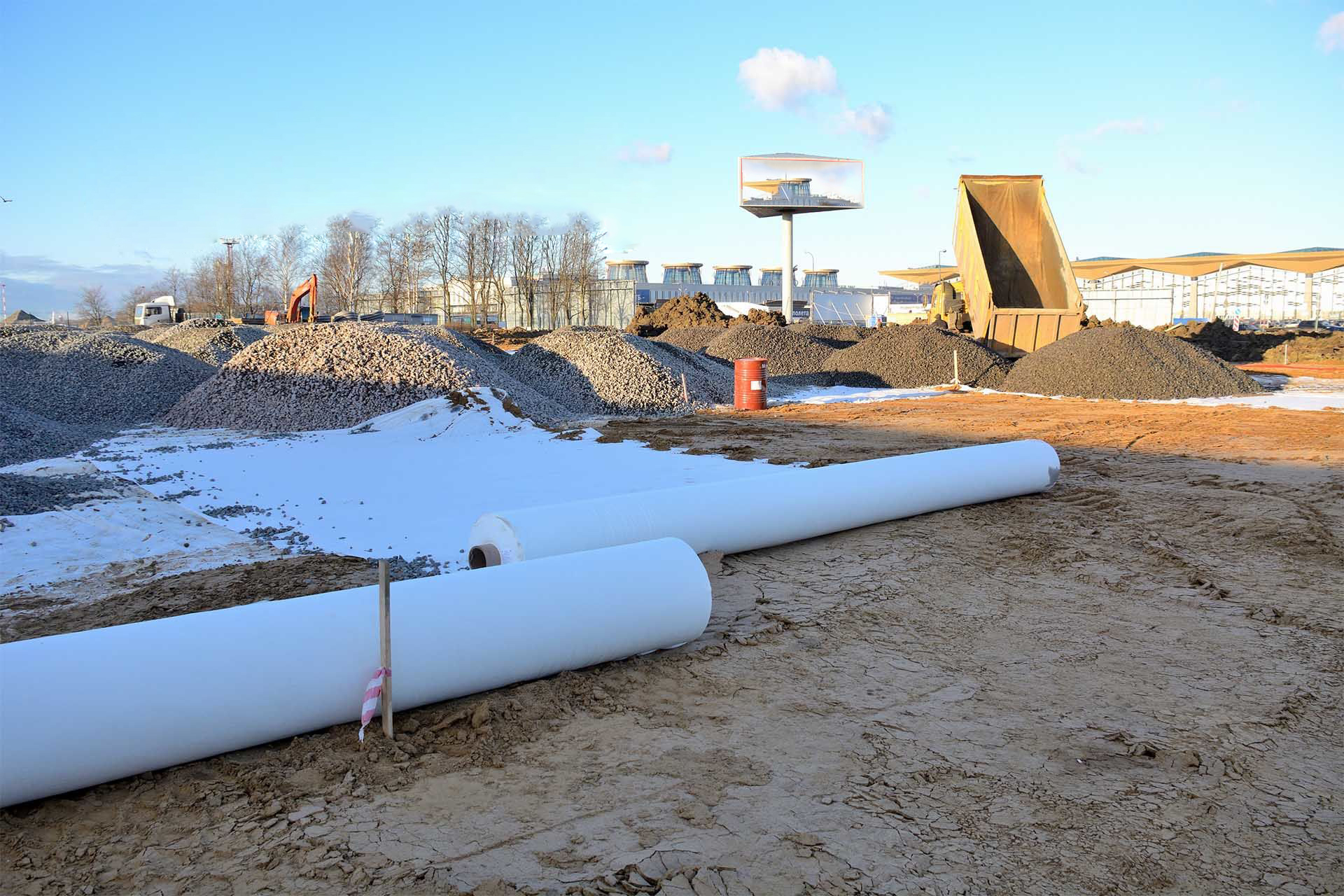Basic requirements for geotextiles laying:
1. The joint must intersect with the slope line; where it is balanced with the slope foot or where there may be stress, the distance between the horizontal joint must be greater than 1.5m.
2. On the slope, anchor one end of the geotextile, and then put the roll down the slope to ensure that the geotextile is kept in a taut state.
3. All geotextiles must be pressed with sand bags. The sand bags will be used during the laying period and will be retained until the top layer of material is laid.
Geotextile laying process requirements:
1. Basement layer inspection: Check whether the basement layer level is smooth and solid. If there is any foreign matter, it should be handled properly.
2. Trial laying: Determine the size of the geotextile according to the site conditions, and try laying it after cutting. The cutting size should be accurate.
3. Check whether the width is appropriate, the lap joint should be flat, and the tightness should be moderate.
4. Positioning: Use a hot air gun to bond the overlapping parts of the two geotextiles, and the distance between the bonding points should be appropriate.
5. The sutures should be straight and the stitches should be uniform when stitching the overlapping parts.
6. After stitching, check whether the geotextile is laid flat and whether there are defects.
7. If there is any unsatisfactory phenomenon, it should be repaired in time.

Self-check and repair:
a. All geotextiles and seams must be checked. Defective geotextile pieces and seams must be clearly marked on the geotextile and repaired.
b. The worn geotextile must be repaired by laying and thermally connecting small pieces of geotextile, which are at least 200mm longer in all directions than the edge of the defect. The thermal connection must be strictly controlled to ensure that the geotextile patch and the geotextile are tightly bonded without damage to the geotextile.
c. Before the end of each day's laying, conduct a visual inspection on the surface of all the geotextiles laid on the day to confirm that all damaged places have been marked and repaired immediately, and make sure that the laying surface is free from foreign substances that may cause damage, such as fine needles, small iron Nail etc.
d. The following technical requirements should be met when the geotextile is damaged and repaired:
e. The patch material used to fill holes or cracks should be the same as the geotextile.
f. The patch should extend at least 30 cm beyond the damaged geotextile.
g. At the bottom of the landfill, if the crack of the geotextile exceeds 10% of the width of the roll, the damaged part must be cut off, and then the two geotextiles are connected; if the crack exceeds 10% of the width of the roll on the slope, it must be remove the roll and replace with a new roll.
h. The work shoes and construction equipment used by the construction personnel should not damage the geotextile. The construction personnel should not do anything on the laid geotextile that may damage the geotextile, such as smoking or poking the geotextile with sharp tools.
i. For the safety of geotextile materials, the packaging film should be opened before laying geotextiles, that is, one roll is laid and one roll is opened. And check the appearance quality.
j. Special proposal: After the geotextile arrives at the site, the acceptance and visa verification should be carried out in time.
It is necessary to strictly implement the company's "Geotextile Construction and Acceptance Regulations"